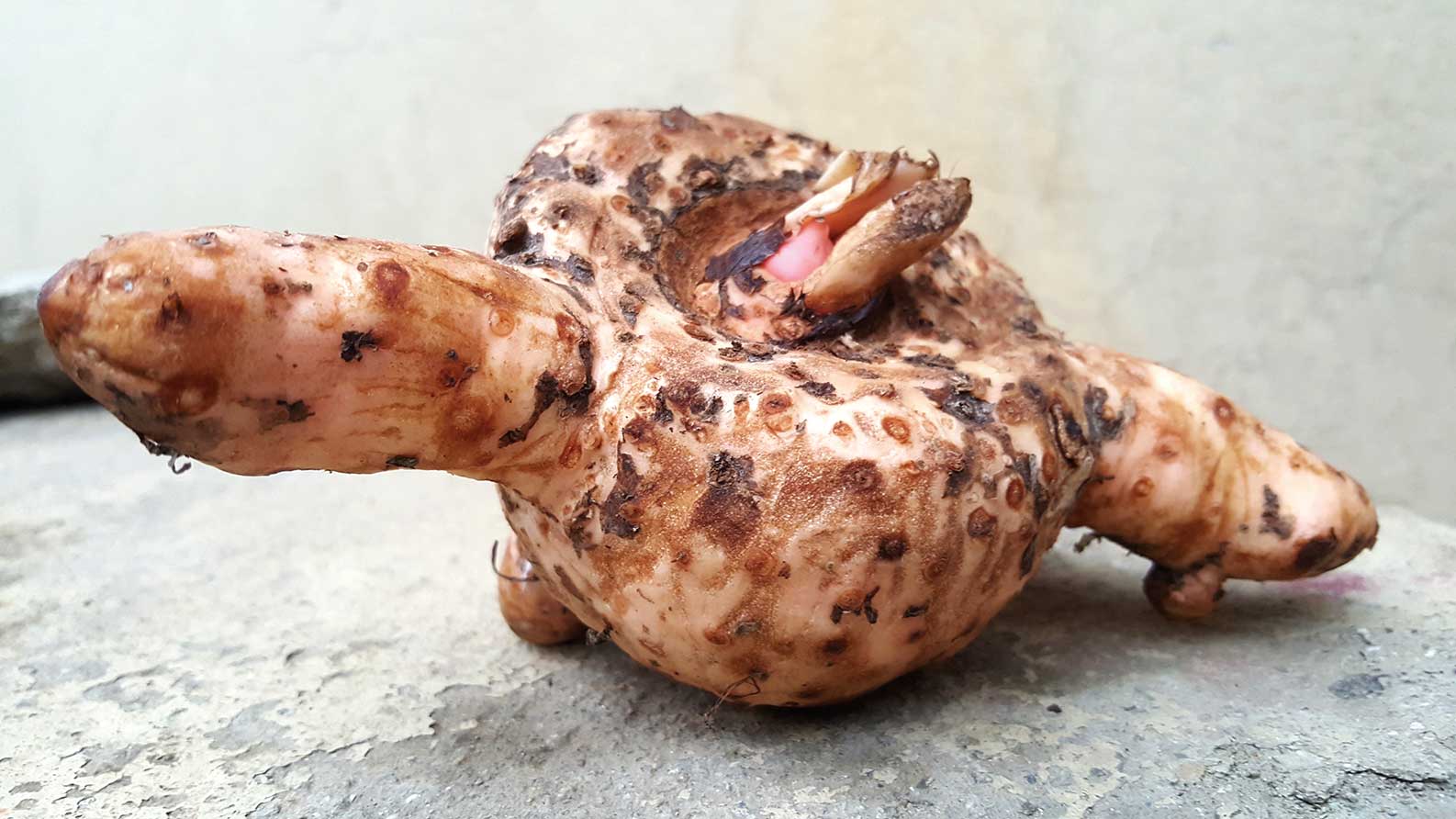At first glance, it is easy to mistake these little round slices for Oreos, or brownies. But, this chocolate brown dish is called sargyang, an ethnic food of the Limbus. It is a type of blood sausage made from pig’s blood, yangben (wild edible lichen), minced pork meat, and plenty of salt and seasonings.
 While this dish is not specific to any occasion and can be eaten any time of the year, traditionally, they were prepared on festivals like Dashain, Tihar, Sisekpa Tongnam (Saune Sankrati), Kokphewa Tongnam (Maghe Sankranti), Chasok Tongnam (Mangshir Purnima), and Yokwa Tongnam (Baisakh Purnima).
While this dish is not specific to any occasion and can be eaten any time of the year, traditionally, they were prepared on festivals like Dashain, Tihar, Sisekpa Tongnam (Saune Sankrati), Kokphewa Tongnam (Maghe Sankranti), Chasok Tongnam (Mangshir Purnima), and Yokwa Tongnam (Baisakh Purnima).
The origin of why people started making sargyang is not clear, however, it is believed that they prepared this dish whenever they slaughtered pigs for food and religious rituals. Pigs and poultry are at the core of Limbu culture, cuisine, and family customs. They are raised not just for food, but also serve as important religious offerings. It is a prerequisite in many social customs and religious rituals like marriage, kul puja (ancestors’ worship), and other lifecycle rituals.
As Limbus practice animist religion and worship spirits, they believe that all living and non-living entities have a soul. So,even when they slaughter a domestic animal for food, they first offer its spirit to the gods. In some Limbu clans, pig sacrifice is a must while performing their kul pujas,like Nahangma, Thebasam, and Sakmura Wademma (a ritual to wash away curse and ill-spoken words to foster social harmony, tolerance, and peace and goodwill among the family members). The pigs sacrificed in the rituals should be three-year-olds, male, and un-castrated. The meat of the sacrifice is boiled without salt and seasoning, and eaten by the family members. But the meat-offering is not to be taken outside, and is to be consumed within the house premises. Any leftovers, by-products, or bones are then buried by digging a pit in the kitchen.
It is normal to have excess of meat and blood when a pig is slaughtered during pujas and festivals, so it is believed that in order not to let any part go to waste, the blood was collected to make blood sausages, which are rich in protein, and kept for a hard day of manual labor.
Pork is a celebratory dish in a Limbu household, and they take pork dish very seriously. For them, chicken and goat meat are never in the same league as pork. Not any meat will do when they’re hosting a big feast (fudong), or when they’re inviting over special guests. The preparation of pork meat shows the host’s high regard for
the guests.

How is sargyang prepared?
First of all, you need fresh pig’s blood (strained of clots). It is then mixed with minced pork meat (with fat), salt, spices, and yangben. You may also add finely diced offal (heart, liver, kidneys) if you like.
The mixture is then stuffed into a pig’s intestine that has been preserved in salt, and flushed through clean water. Once this is done, the casing is tied at both ends, and then cooked in water for about an hour in moderate heat. The sausages will float to the surface when they’re fully cooked.
After taking them out, they are refrigerated for seven to eight hours before they are consumed. You can fry them up or grill them, and eat with hot achar as snacks. It tastes best with hot chili and Sichuan pepper (timbur) paste.It has rich flavor and crumbles in your mouth. The center is moist, and the outer layer is slightly chewy, leaving you with that aftertaste of fatty porky heavenly flavor.
Back in the days when there were no refrigerators, the sausages were kept in a woven bamboo basket (perengo) and hung on the wall for at least a day before they were consumed. This air-drying method drove the moisture out. It is said that the sausages could last for at least two weeks without going bad. The use of salt and fats also helped preserve meat, so it stayed fresh for a long time.
In cities, people don’t make sargyang very often, as they aren’t involved in home slaughter anymore. But I have tried it a couple of times at the indigenous food festivals and other Limbu festivals in Hattiban. And, there’s one more place where you could sample sargyang, a restaurant called Noyos, opposite the Chinese Embassy, whose sargyangis as good as home-made.
This place is known for its signature pork dishes like pork momos, smoked pork, pork leg pickle, pork leg curry, and the non-veg aaloonimki (Dharane style) and aaloodum. Their smoked pork is simply off the charts.
Noyos
Ph: 014439857










